חדשות המחקר

Third trimester re-screening for gestational diabetes in morbidly obese women despite earlier negative test can reveal risks for obstetrical complications (J Obstet Gynaecol Res . )
We investigated associations of maternal obesity with late gestational diabetes mellitus (GDM) diagnosis (>34 weeks) in women with previous normal glucose screening, and associations of late GDM with obstetrical outcomes.
Raneen Abu Shqara, Shany Or, Yara Nakhleh Francis, Lior Lowenstein, Maya Frank Wolf
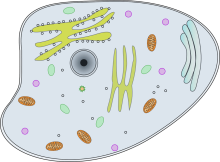
Shams Twafra , Tal Sneh, Kolluru D Srikanth, Tomer Meirson, Alessandro Genna, Hava Gil-Henn: Correction: A novel Pyk2-derived peptide inhibits invadopodia-mediated breast cancer metastasis (Oncogene . )
Erratum for A novel Pyk2-derived peptide inhibits invadopodia-mediated breast cancer metastasis. Twafra S, Sokolik CG, Sneh T, Srikanth KD, Meirson T, Genna A, Chill JH, Gil-Henn H.

Khalaf Kridin: Management and treatment outcome of DRESS patients in Europe: an international multicentre retrospective study of 141 cases (J Eur Acad Dermatol Venereol . )
Drug reaction with eosinophilia and systemic symptoms (DRESS) is a rare but potentially fatal drug hypersensitivity reaction. Objective: To explore treatment approaches across Europe and their impact on the disease course, as well as prognostic factors and culprit drugs.
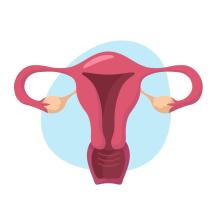
Jacob Bornstein: High-risk HPV testing vs liquid-based cytology for cervical cancer screening among 25- to 30-year-old women: A historical cohort study (Acta Obstet Gynecol Scand .)
High-risk human papilloma virus (hrHPV) DNA testing is more sensitive than cytology screening, achieving greater protection against cervical cancer. Controversy exists regarding the preferred screening method for women 25-30 years of age. At this age, infection with HPV is common and usually transient. Consequently, hrHPV screening in this age group is fraught with high false-positive screening results, leading to more colposcopies and unnecessary treatments with the potential for harm. In the present study, we aimed to compare the results of two screening methods in relation to high-grade cervical intraepithelial lesion detection rate in the young age group of 25-30 years.
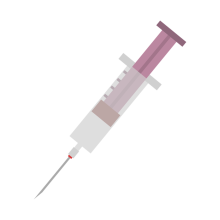
Michael Rechter, Sivan Saraph, Hector Cohen, Ohad Ronen: Nondiagnostic Test Result Rates Following Thyroid Extra-Fine-Needle Aspiration (Am J Clin Pathol. )
The first Bethesda classification category of thyroid fine-needle aspiration biopsy (FNAB) is nondiagnostic (ND), which indicates that the specimen's cellularity is inadequate for evaluation. This work investigated the effect of needle diameter size on ND rates by comparing diagnostic outcomes of FNAB samples collected with 23-, 25-, and 27-gauge needles.

Raneen Abu Shqara, Shay Bussidan, Daniel Glikman, Hagai Rechnitzer, Lior Lowenstein, Maya Frank Wolf: Clinical implications of uterine cultures obtained during urgent caesarean section (Aust N Z J Obstet Gynaecol . )
Postpartum endometritis (PPE) is 12-25 times more common following caesarean sections (CS) performed after labour onset than after vaginal delivery. Risk factors for PPE include prolonged rupture of membranes (ROM), chorioamnionitis, prolonged labour, multiple cervical examinations and Group B Streptococcus colonisation of the lower genital tract. Aims: We compared uterine culture results and microbial antibiotic susceptibility according to ROM duration in emergent intrapartum CS. Secondary outcomes included PPE incidence, and identification of clinical and microbiological predictors of infectious postpartum morbidity.

Dana Cohen, Ronen Sloma, Ayalla Fedida, Limor Kalfon, Relli Ovadia, Zvi Segal, Yanir Kassif, Tzippi Falik Zaccai : Long term ophthalmic complications of distal arthrogryposis type 5D (Ophthalmic Genet .)
Distal Arthrogryposis type 5D (DA5D) is a rare genetic disease, expressed phenotypically by skeletal and ocular abnormalities.
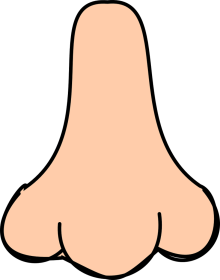
Amani Daoud, Netanel Eisenbach, Ohad Ronen, Amiel Dror, Tali Jane Ohayon, Majd Hajouj, Eyal Sela, Tal Marshak: Cross-cultural adaptation of the Hebrew Nasal Obstruction Symptom Evaluation (NOSE) scale (Laryngoscope Investig Otolaryngol . )
Nasal obstruction is a common complaint. The Nasal Obstruction Symptom Evaluation scale (NOSE) is a reliable validated tool used to assess the quality of life of patients with nasal obstruction. The purpose of this study is to validate the Hebrew version of the NOSE scale (He-NOSE).
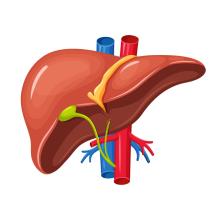
Tomer Meirson: Systemic review of the robustness of randomized controlled trials for the treatment of cholangiocarcinoma in three domains: survival-inferred fragility index, restricted mean survival time, and the spin effect (Hepatobiliary Surg Nutr .)
The vast majority of patients with cholangiocarcinoma (CC) have advanced disease at diagnosis and are candidates for palliative treatment only. The robustness of the randomized controlled trials regarding the treatment of CC are assessed.

Avi Benov: Combat Injury Profile in Urban Warfare (Mil Med . )
Combat ground maneuvers consist of various platforms and have several environmental characteristics, influenced by the terrain, the operational mission, and the force's capabilities. This study assesses data on injuries sustained during urban warfare, aiming to evaluate the relationship between injury characteristics, maneuver platform, and personal protective gear on the battlefield.

Michael V Robinshaw, Mary Abdo, Kutaiba Alkeesh, Said Abozaid, Imad Abu El-Naaj: Factors associated with prolonged hospitalizations from odontogenic infections in children (J Clin Pediatr Dent)
Oro-facial infections are common pathologies comprising a substantial health concern in the pediatric population. Incorrect or late treatment may lead to serious and possibly life-threatening complications. The aim of this study is to analyze variables associated with prolonged length of hospital stays (LOS) due to odontogenic infections in children.

Liron Rozenkrantz: Association of pessimism with cardiovascular events and all-cause mortality (Prog Cardiovasc Dis .)
Poor psychological health is associated with Takotsubo cardiomyopathy, cardiac syndrome X, coronary microcirculatory dysfunction, peripheral artery disease, or spontaneous coronary artery dissection. Data regarding pessimism, cardiovascular disease (CVD) events and mortality and all-cause mortality remained inconclusive. This systematic review and meta-analysis aim to provide an overview of the association between pessimism, CVD outcomes and mortality.

Yaseen Awad-Igbaria, Eilam Palzur: Blocking the ErbB pathway during adolescence affects the induction of anxiety-like behavior in young adult maternal immune activation offspring (Pharmacol Biochem Behav .)
Epidemiological and experimental evidence demonstrates that maternal exposure to infection during gestation increases the offspring's risk of developing schizophrenia and other neurodevelopmental disorders. In addition, the NRG-ErbB4 signaling pathway is involved in brain development and neuropsychiatric disorders. Specifically, this pathway modulates the dopaminergic and GABAergic systems and is expressed in the early stages of prenatal development. We recently demonstrated that maternal immune activation (MIA) at late gestation altered the expression of NRG1, its receptor ErbB4, and the dopamine D2 receptor four hours post-injection of viral or LPS in the fetal brain. We also reported that blocking the ErbB pathway during adolescence resulted in increased striatal DA content and reduced preference for sweetness and alcohol that persists into adulthood. However...

Khalaf Kridin, Batsheva Ingram, Avi Peretz: Sexually Transmitted Diseases in Northern Israel: Insights From a Large Referral Laboratory ( Low Genit Tract Dis . )
The aims of the study are to investigate the distribution and frequency of different sexually transmitted diseases (STDs) among a large study population of individuals undergoing STD investigation both in inpatient and STD clinic settings and to evaluate influence of test anonymity on the positivity rate of pathogens.

Khalaf Kridin, Noor Mruwat: Association of Rituximab With Risk of Long-term Cardiovascular and Metabolic Outcomes in Patients With Pemphigus (JAMA Dermatol . )
The association of different therapeutic approaches with long-term cardiovascular and metabolic outcomes in patients with pemphigus remains to be precisely evaluated. Objective: To assess the risk of long-term cardiovascular and metabolic outcomes and all-cause mortality in patients with pemphigus managed by rituximab compared with those receiving treatment with first-line corticosteroid-sparing agents (azathioprine and mycophenolate mofetil [MMF]).



